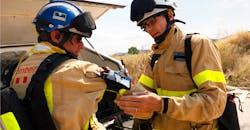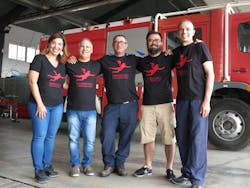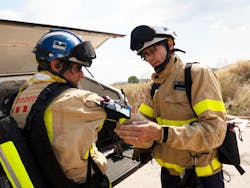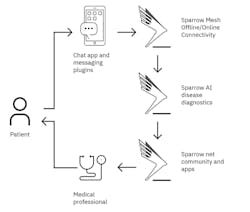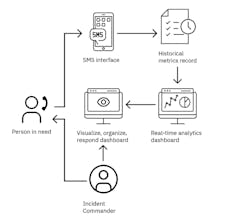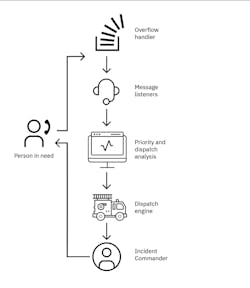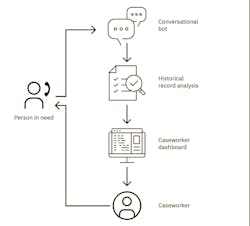Make-a-thon and Hack-a-thon events have produced interesting solutions to the world’s problems. Call for Code is just one of these competitions, and it is showing a lot of promise.
“Call for Code was formed to inspire and empower the 24 million developers around the world to create tech solutions to solve some of the toughest social challenges we face,” said creator David Clark. “Last year’s Call for Code Global Challenge was the largest engagement of developers in history, and this year it has nearly doubled in size.” Competition winners will have their solutions further developed and deployed by IBM’s unique Code and Response initiative—the company’s $25 million program dedicated to the creation and deployment of solutions powered by open-source technology to tackle the world’s biggest challenges.
Call for Code itself is a $30 million, five-year global initiative which, assisted by charitable partner United Nations Human Rights, has become the largest and most ambitious effort bringing together start-up, academic and enterprise developers to solve pressing societal issues. Building on last year’s inaugural challenge, Call for Code 2019 focused on creating solutions to help mitigate the impacts of natural disasters and enable first responders to better support survivors. Centered around mass humanitarian relief for natural disasters the 2019 competition had a lot of applicants working on how to get the right help to where it is needed at the right time.
This year, a nurse, a firefighter, and developers united to take the $200,000 top prize in global coding competition with a solution to improve health of first responders: Prometeo, an AI-based platform that monitors firefighter health and safety in real time. Having data points to better understand what environmental factors firefighters are exposed to can help to manage their movements in safer ways, or at least understand the level of medical care a firefighter may need over time based on what conditions they have been exposed to.
Prometeo’s team, pictured left to right: Salomé Valero, Marco Rodriguez, Joan Herrera, Josep Ràfols, and Vicenç Ferrés Padró.
In Europe, Copernicus’ European Forest Fire Information System has already recorded more than 2,000 wildfires to date in 2019—three times the annual average over the past decade. (Source: Copernicus Emergency Management Service). Using the expertise of first responders and technologists who have witnessed the human toll of the fires across Spain, Prometeo, developed in Barcelona, aims to protect firefighters by guarding them from the cumulative effects of the smoke and toxic substances inhaled while battling wildfires.
Joan Herrera, a veteran firefighter, Vicenç Padró, an emergency medical nurse, and IT professionals Salomé Valero, Josep Ràfols, and Marco Rodriguez teamed up to create a combination hardware-software solution based on multiple IBM Cloud services. The health device—which is about the size of a smartphone and straps to a firefighter’s arm—has multiple sensors that measure key variables, including temperature, humidity, and smoke concentration. This information is collected and transmitted to IBM’s Cloud IoT platform; then, a Node-RED workflow sends the data to the IBM Watson-based machine learning model, which distills the information into a simple color-coded status for fire command centers to monitor the health of each deployed firefighter in real-time.
“We need to do something to help our firefighters,” Valero said. “For me, they are our heroes. They are putting their lives on the line for us. My dream is to help them with Prometeo.” Prometeo stores all the health information in a Cloud database over time, providing a historical and comprehensive view of the data. Any future client–such as authorized fire command centers tasked with tracking firefighters in the field–can connect to the Prometeo dashboard by simply using JavaScript and WebSockets.
The five Call for Code 2019 Global Challenge winners were:
First place: the aforementioned Prometeo.
First place and the $2000,000 prize went to Prometeo—an AI-based platform that monitors firefighter health and safety in real time.
Second place: Sparrow, whose members hail from India, China, and the U.S. The Sparrow team developed an open-source conversational AI platform that helps users address their physical and psychological well-being during and after natural disasters by matching them with automated support and live experts.
The Sparrow Platform is a two-part solution. The first part aims to connect people to all other applications out there so they can get information during a disaster. “Think of Sparrow as Alexa, but it is something that’s ubiquitously accessible through many platforms, chat applications, many devices, with or without internet,” sais team member Jay Lohokare. “So you could talk to Sparrow through any apps you have and ask the question, ‘Hey, are there any updates about the hurricane that’s coming to Florida?’”
Allowing phones to act as hubs could offer a lot of value. There was no mention about bandwidth or how the signals are sent, which would affect the distance and amount of data a system like this could handle. However, in a natural disaster it could be a way to get a signal in and out where one doesn’t exist.
One interesting development is the platform’s ability to work without internet. It can do this by converting a smartphone into a mobile tower, and other people’s smartphones that are close to it are turned into mobile towers, allowing for communication with the people around you. Eventually the messages in these disconnected areas reach smartphones that are within range of internet and then the messages reach the rest of the world. Sparrow was awarded $25,000.
Third place: Rove. When disaster strikes, first responders face innumerable challenges. Perhaps most significant among those is the need to be able to send responders to the areas where they can make the most impact based on limited time and resources. To do that, first responders must prioritize victims’ needs based on location and severity.
Rove is an SMS interface that uses historic data with real-time data to generate an easy-to-use map for organizing rescue efforts and managing resources.
Rove addresses this through an SMS chatbot that uses natural language understanding to give users health information during a natural disaster. People can send a SMS message and, after answering some questions, the software is able to generate a map (similar to a heat map) to first responders, showing what help is needed, how much, and where. This can help alleviate crowded call centers that are over-run when natural disasters happen. Rove was awarded $25,000.
Fourth place: AsTeR. There are few guarantees when it comes to natural disasters, but one near certainty is that victims will bombard emergency call centers with requests for help. Hence, there is a need to handle the inevitable spikes in call volume. Technology can play a major role in helping these call centers assess and prioritize calls based on severity rather than simply addressing them based on which victim calls first.
AsTeR is designed to help crowded emergency call centers during disasters. Taking overflow calls, AsTeR uses a talk-to-text feature to find keywords to priorities and dispatch emergency resources.
A crowded call center can put lives at risk. The team of European graduate students from the University of California, Berkeley—Meryll Dindin, Florian Fesch, Thomas Galeon, Pierre-Louis Missler, and Oskar Radermecker—built this application to filter and assess calls when a human is unable to immediately respond.
At its core, AsTeR is an API that call centers would be able to integrate into an emergency call center’s existing technology. The core feature that the team developed first was the natural language processing operators, using IBM Watson Studio. Once you have the audio signal coming in, AsTeR transforms it into a transcript using IBM Watson’s speech-to-text technology. Keywords in the text can aggregate with keywords in other calls, and each are then classified based on their severity—whether there are potential fatalities, injuries, disease, flood, fire—and the call is given a priority score. AsTeR was awarded $10,000.
Fifth place: Healios. Developer Kevin Kim lived through Hurricane Sandy in 2012 and saw the deep impact the storm had on close friends—not only on physical belongings and health, but on their mental well-being. One of Kim’s friends, for example, had a tree crash through his roof, and though no one was physically hurt, dealing with the insurance and finances after the storm took a heavy toll.
Mental well-being is also important to consider when trauma, stress, and disasters occur. Healios uses a conversational bot with software to direct people in need to the right healthcare.
The experience spurred Kim and his teammates—Christopher McKinney, Sunjae Shim, Tony Park, and Xuelong Mu — to join forces and create Healios, an online platform that uses a conversational interface and AI to help connect those who need mental healthcare with the right case worker. The team’s solution has been named a top-five finalist in the Call for Code 2019 Global Challenge. Healios was awarded $10,000.
These solutions will also receive support from IBM and The Linux Foundation to establish open-source projects through Code and Response. This year more than 180,000 individuals, including independent and enterprise developers, data scientists, activists, and students, from 165 nations participated. The teams used The Weather Company data and open source-powered technology—including IBM Cloud, IBM Watson, and IBM Blockchain, among other technology—to create more than 5,000 applications to help prepare for and mitigate the impact of natural disasters.
“The response has been overwhelming, and signals the growing sense of responsibility felt by many members of the open-source community to deliver on the needs of our communities and first responders,” said Bob Lord, IBM’s senior vice president, cognitive applications and developer ecosystems. “From fighting wildfires to providing ubiquitous access to medical services for all, it’s inspiring to witness.”
